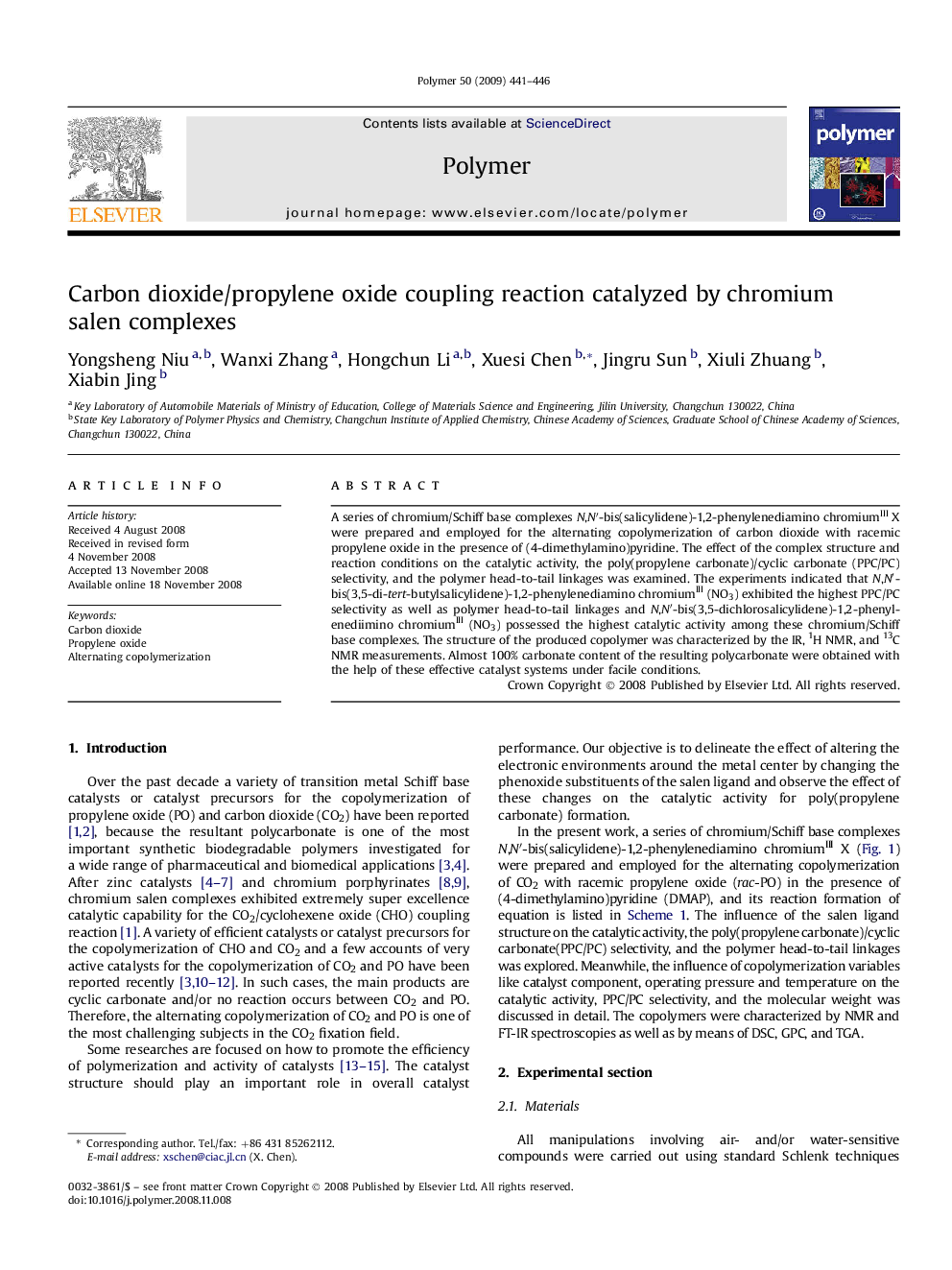| Article ID | Journal | Published Year | Pages | File Type |
|---|---|---|---|---|
| 5185384 | Polymer | 2009 | 6 Pages |
A series of chromium/Schiff base complexes N,Nâ²-bis(salicylidene)-1,2-phenylenediamino chromiumIII X were prepared and employed for the alternating copolymerization of carbon dioxide with racemic propylene oxide in the presence of (4-dimethylamino)pyridine. The effect of the complex structure and reaction conditions on the catalytic activity, the poly(propylene carbonate)/cyclic carbonate (PPC/PC) selectivity, and the polymer head-to-tail linkages was examined. The experiments indicated that N,Nâ²-bis(3,5-di-tert-butylsalicylidene)-1,2-phenylenediamino chromiumIII (NO3) exhibited the highest PPC/PC selectivity as well as polymer head-to-tail linkages and N,Nâ²-bis(3,5-dichlorosalicylidene)-1,2-phenylenediimino chromiumIII (NO3) possessed the highest catalytic activity among these chromium/Schiff base complexes. The structure of the produced copolymer was characterized by the IR, 1H NMR, and 13C NMR measurements. Almost 100% carbonate content of the resulting polycarbonate were obtained with the help of these effective catalyst systems under facile conditions.
Graphical abstractDownload full-size image
